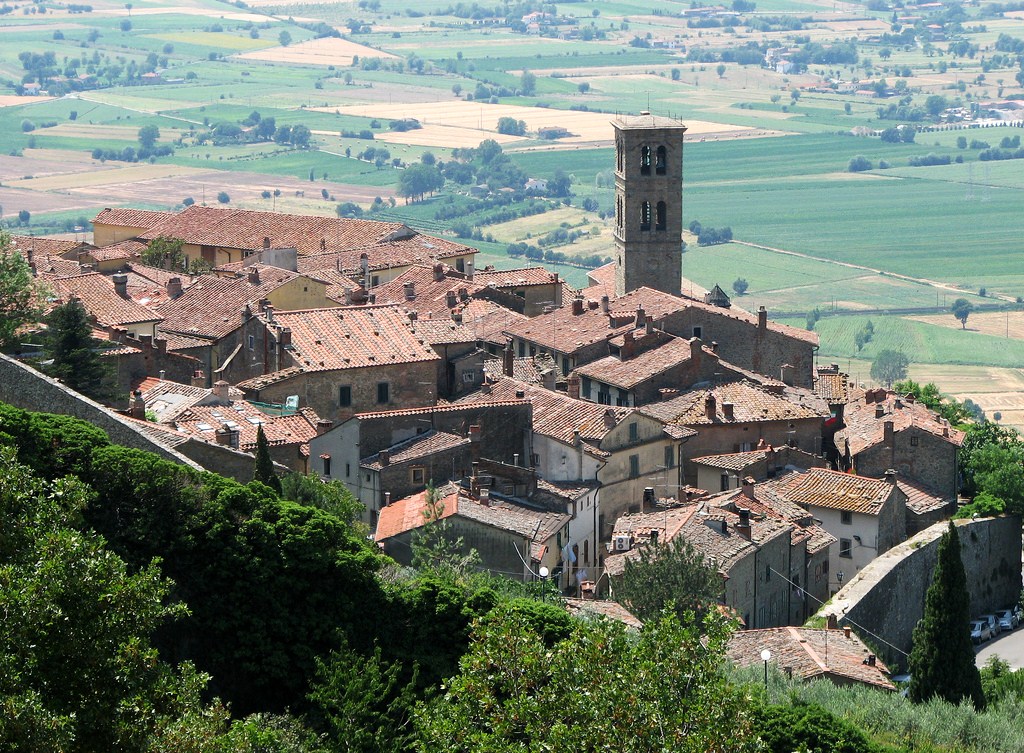(at 60min)
Situated at an altitude of 500m above sea level, on a steep buttress of the Alta di San Egidio, Cortona is a large medieval village with buildings mainly made of sandstone, typical for the façades of the dwellings facing outwards and supported by characteristic wooden corbels; the ancient part of the town is enclosed by grandiose Etruscan walls dating back to the 4th century BC. The centre of the town is Piazza della Repubblica, where the Town Hall (1241, with a clock tower) stands and, opposite, the Palazzo del Capitano del Popolo. In Piazza Signorelli there is the Palazzo Pretorio (XII century), where the Museum of the Etruscan Academy is located; the museum houses ancient Roman, Etruscan and Egyptian remains, as well as various works by artists of the calibre of Pinturicchio, Ghirlandaio and Signorelli (the latter was originally from Cortona). In Piazza del Duomo, in front of the cathedral, there is the former Church of Jesus, now the Diocesan Museum, with a valuable collection of paintings by Tuscan artists, including those by Signorelli and Pietro Lorenzetti; also worth seeing is the lower church, a room with frescoes by Doceno designed by Vasari. Via Santa Croce goes up to the hill where, in a very suggestive site, there is the Sanctuary of Santa Margherita (basic interior with three naves, there is the body of Santa Margherita, in a silver urn of 1646, and the ancient marble tomb of the saint of 1362). Just outside the walls stands the Madonna del Calcinaio, a Renaissance church of simple and harmonious elegance, surmounted by an octagonal dome covered in lead.
At 3,5 km from the town there is the Convento delle Celle, founded by Saint Francis around 1220, with a cell where the saint stayed and a small church of 1573.

